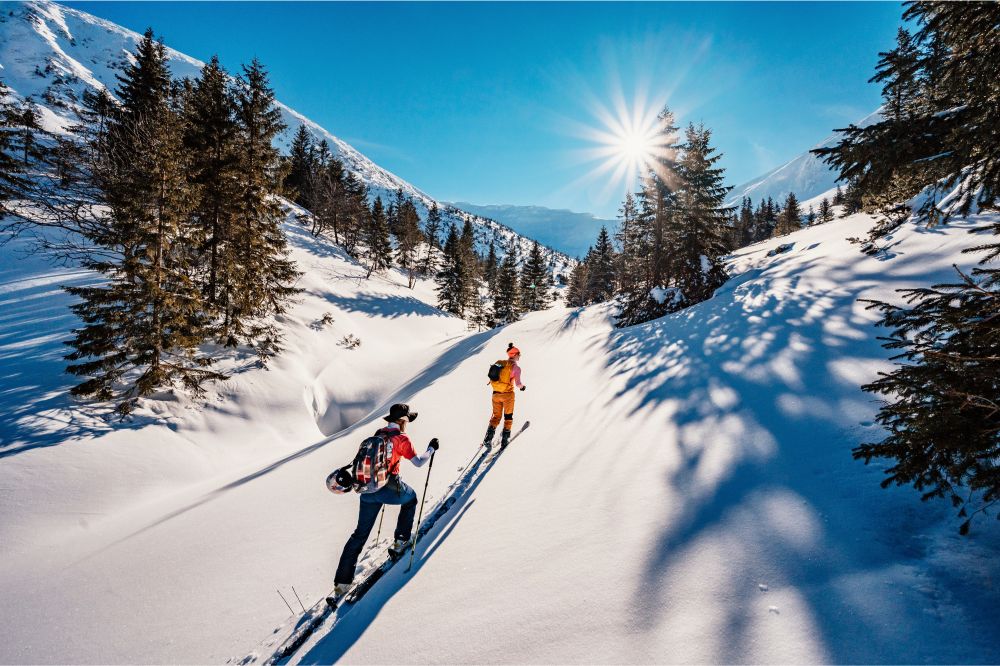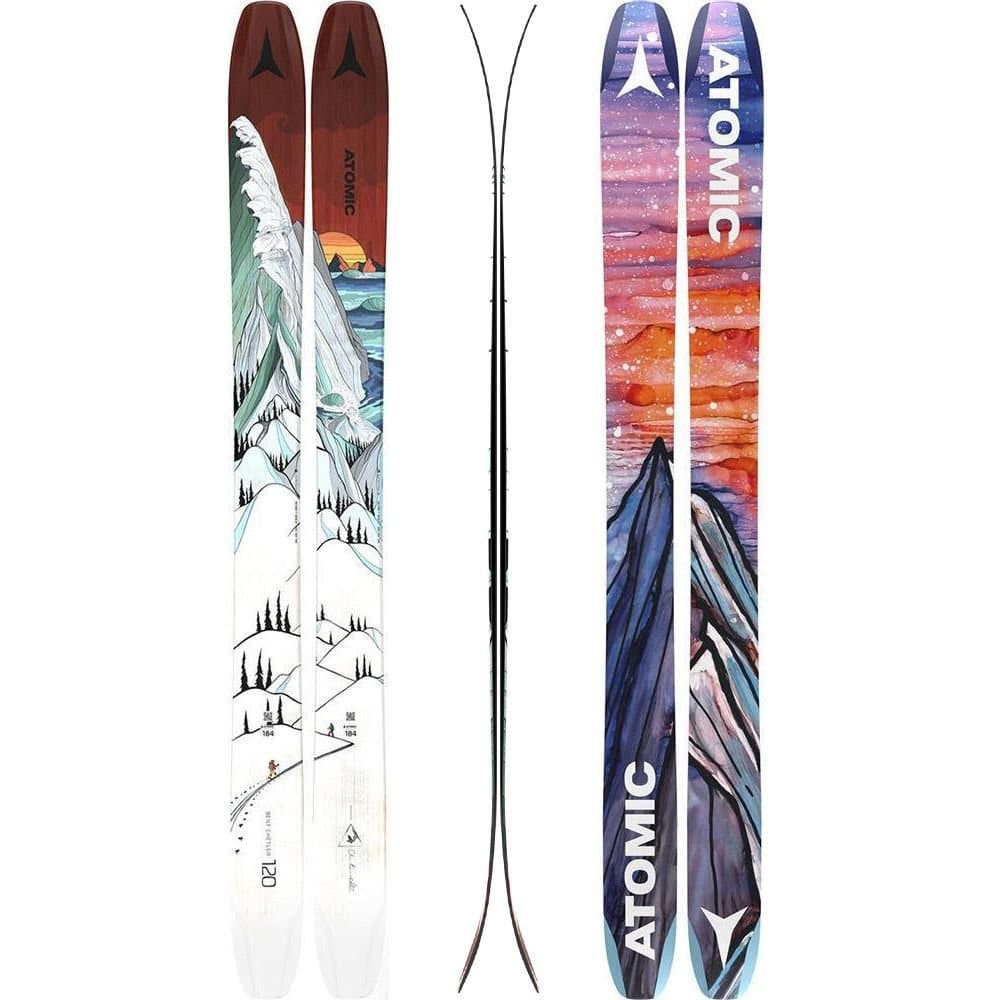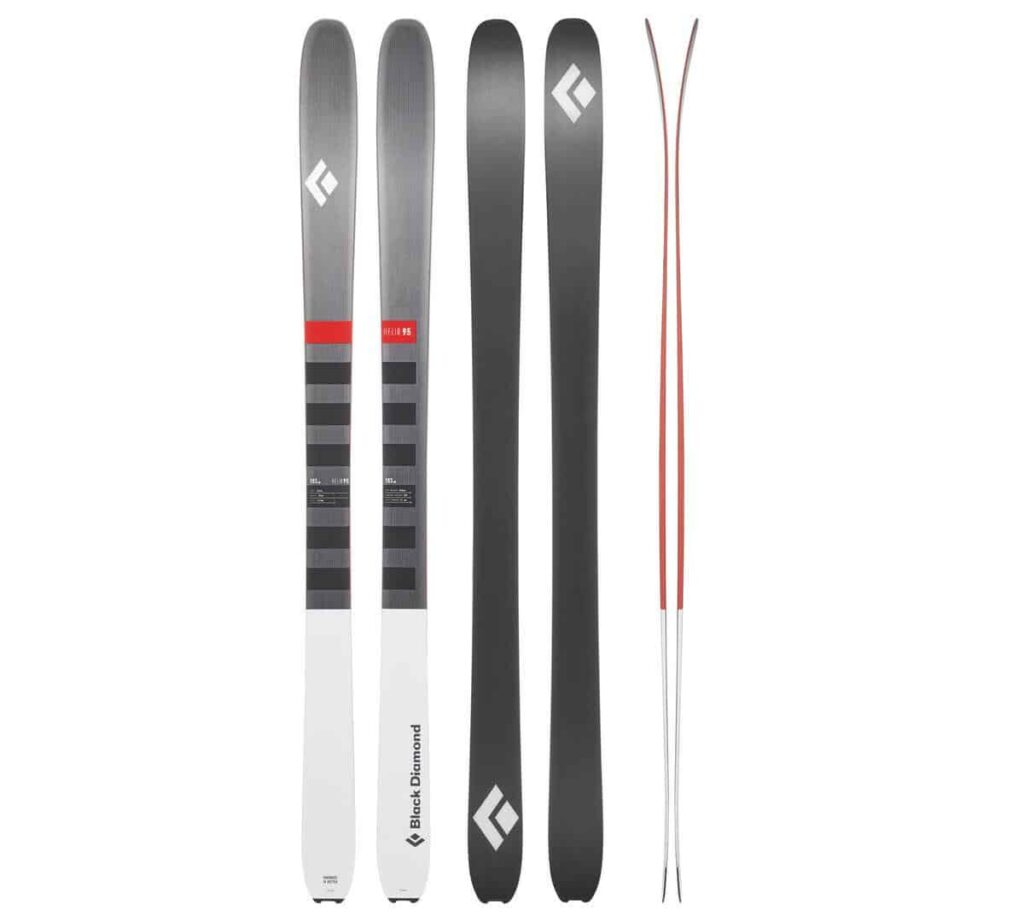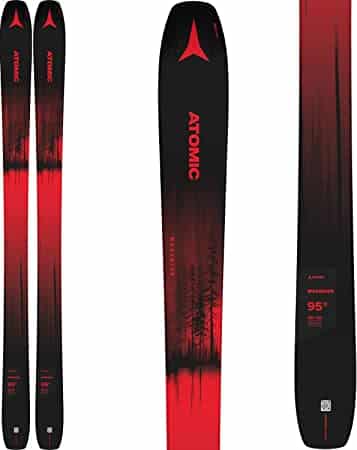
Skiing is a great sport for those who love the outdoors and keeping fit. There are many different types of skiing to choose from, all of which make for a great skiing trip.
But what is the difference between these different types of skiing? So how does On-Piste, Off-Piste, Touring or Backcountry, Mountaineering, and Freeride skiing differ?
There is more than one factor that comes into play when looking at the difference between the various types of skiing. While the terrain is one, another consideration is the distance from any clear-cut ski slopes and how far you venture away from the lodge or resort you are visiting.
Choosing the best set of skis for the different types of skiing will significantly affect your skiing ability, and skis should be chosen with this in mind.
Let’s delve into the world of skiing by looking at each type in more detail, keeping in mind that they differ according to how far they are from a marked course.
What is Off-Piste Skiing?
Many ski resorts offer off-piste skiing for the more advanced or skilled skier. Off-piste skiing is still within the boundaries of the resort but is located outside of the general skiing area, on the slopes, and accessible by ski lifts. Ski lifts are used to access the highest points of the slopes, but are away or just off of the general slopes.
Off-piste skiing sees skiers skiing from one lift area to another, and does not involve any walking or hiking.
Also called side- or slack-country skiing, many lodges require the skier to be insured in case of any accidents that may occur while skiing off-piste, so be sure to check any requirements before you book your stay at a resort or lodge.
Off-piste skiing requires snow conditions to be just right, which is generally when there is a lot of fresh powder snow that makes for great skiing conditions. But do not underestimate the fun you can have with Off-Piste Skiing in Spring! If you are unsure of where exactly the best spots are, guides are available for hire and will guide and assist you in locating the ideal off-piste skiing spot.
What is Freeriding?
Freeriding is a type of skiing done on natural terrain and has no set goals, rules, or even a marked course. It is, essentially, skiing in the wide open terrain of any mountain slope and is enjoyed by daredevils and more advanced skiers.
Freeriding areas are accessible by ski lifts or can be found on the side of any mountain pass. If you want to move higher up a slope, you can put ski skins on your skis and wear snowshoes to hike up to the ideal spot.
The main difference between freeriding and off-piste skiing is that freeriding can involve a short walk or hike with skis to a decent-sized slop or terrain, while off-piste is just off the general “slide” or skiing area, and sees skiers returning to the slope on a ski lift.
One would need good skiing skills to tackle freeriding, and it is recommended that even the most advanced skiers hire a guide to help them find the best areas to ski, especially if they are new to an area. But for freeriders, the thrill of the ride overshadows (is “overshadows” the right verb? the need for a walk or hike to find that perfect slope. Touring and Backcountry skiing sees skiers hiking or climbing to their ideal skiing spot, and this forms a major part of the skiing experience.
Skiers who choose freeriding love the thrill of a quick descent and will more likely than not hike to a good spot to have the best skiing experience, but will generally choose a lighter set of skis to carry on their hike.

What is Touring or Backcountry Skiing?
You’d have to be pretty fit to go on a touring or backcountry skiing trip. This type of skiing is done in the remote wilderness and is not within any boundaries of fancy ski lodges or skiing areas. The hike or climb is in itself a large part of backcountry or touring skiing, and is worth the effort as skiers seek the ultimate skiing experience.
There is truly no better way to explore the mountain slopes than on a touring skiing trip, and many skiers use skins on their skis to hike up to find the best skiing spots.
Many touring or backcountry skiing enthusiasts hire guides to take them on the best trips. As these areas are not accessible by lifts, it requires the skier to have a good grasp of skiing and generally good fitness levels to sustain them on the hike.
A touring skiing trip is the ultimate way to just relax and take in the beauty of the snow and mountains, but you will need a fair knowledge of the mountains, snow, and weather conditions for touring trips that take you into the remote areas of the mountain.
What is Ski Mountaineering?
This type of skiing is by far the most dangerous, and only the most experienced skiers/mountaineers will attempt a ski mountaineering trip. Ski mountaineering requires both excellent skiing and mountain climbing skills, as well as a few necessary pieces of equipment to help you climb the mountain to make your descent.
Ski mountaineering is essentially a type of skiing in which there is at least one section of the trip that requires hiking or climbing, whether it be to gain access to a higher slope, or to find better snow conditions.
The type of equipment generally needed for ski mountaineering includes touring and mountaineering gear, crampons, an ice ax and pick, harnesses, and any other equipment that will help you get safely to the top of any mountain slope.
Ski mountaineering is reserved for those skiers who are both highly skilled and experienced in skiing the most treacherous conditions. The use of a guide is essential for ski mountaineering trips to ensure the safety of all skiers. Ski mountaineering is a great activity for those who enjoy a good climb up a mountain and it is a combination of backcountry and mountaineering rolled into one.
How to Choose Skis for your Skiing Trip
One of the most commonly asked skiing questions from skiers embarking on a skiing trip is if the type of skis differs according to the type of skiing they are interested in doing. And the answer is most definitely yes.
Choosing the right skis for the type of skiing you will be doing is important and will ensure that you are adequately prepared for the skiing conditions ahead.
Safety is key when skiing, so let’s look at the types of skis and where they can be used.
Type 1: Powder Skis / Freeride Skis
Powder skis are made for skiing in softer, deeper snow. Wider than other types of skis, they give the skier the most stability, maneuverability, and turning ability. Powder skis are the most versatile skis and are to be used for more than just one type of skiing we have outlined above.
Powder skis should be chosen according to your height and should be 10 to 15 cm taller than you are. They are the best choice for off-piste and freeride skiing.

Type 2: Touring Skis
Touring skis are designed with touring or backcountry skiing in mind and are lightweight, making them easy to carry up mountain slopes as you search for the ideal skiing spot. They float extremely well in deep snow and come in a variety of widths according to the skier’s skill level.
Wider skis are great for those who need more stability and narrower skis provide more maneuverability for advanced skiers.
For touring, backcountry, or even mountaineering ski trips, choose touring skis that will suit your needs and are the correct size for your height.

Type 3: All-Mountain Skis
All-mountain skis are pretty much the best type of skis for a variety of skiing types and are versatile and lightweight. While they are narrower than powder skis, they have a shorter base, resulting in more maneuverability.
These skis are great for use in powder or harder snow and are ideal for most of the skiing types we identified at the beginning of our article. Pop ski skins on your all-mountain skis and they are perfect for touring.
If you prefer off-piste skiing but want to have the option of a freeride or all-mountain ski trip, all-mountain skis should be your first choice.

Other Equipment You May Need
Depending on the type of skiing you will be doing, there might be a few extra things you must take with you to make your trip that much more enjoyable and, of course, increase your safety.
Did you know that there is more than one type of ski boot to choose from? There are, in fact, three different types of boots to choose from. They are:
- Piste boots – Harder boots that provide good stability and help beginner skiers get the hang of skiing.
- Freeride boots – Boots that have more flexibility and are better for advanced riders who focus more on turning and maneuvering their skis.
- Mountaineering or touring boots – These boots are lightweight and are made for use when hiking to your chosen skiing spot.
Another thing you might want to consider when skiing is the type of ski poles you will need. Telescope poles are the most popular type of pole and can be used for all types of skiing. Ski poles help beginner skiers maintain stability and balance, while more advanced skiers use their ski poles to maneuver their skis on tricky terrain.
(Not exactly: Normal poles are the way to go for Off-Piste and Freeriding and even if you plan to do a short ski tour from time to time. However, if you mainly go on tours or even want to do a ski mountaineering day, you need telescope poles. Finally, ski poles help not only beginners with balance, so they are a need for everybody who rides powder).
Ski poles should be chosen according to the skier’s height and should be lightweight and easy to use.
Clothing is an important consideration when planning a skiing trip. With the wide variety of clothes designed specifically for skiing available online or at sporting goods stores, it is possible to be comfortable and look stylish. Remember to choose lightweight clothing and dress in layers to avoid sweating. The main aim of layering your clothing is to keep your skin as dry as possible, so be sure to choose your outfit carefully.
Ski goggles and a good-quality protective helmet are a must for all types and skiing and are especially important if you intend on skiing outside of the marked slopes.
Powder Skiing Equipment
In order to make your life a little easier, we dedicated a full article about the equipment you really need for a powder day. So if you want to find more information on how to plan a day in the free nature, check it out.
There you’ll also find a really useful dowloadable packing list.
Conclusion
Before you set out on your skiing adventure, it is important to know about the different types of skiing, the best types of skis to use, as well as other equipment that you may need to take with you on your skiing trip.
From skis to clothes and ski poles, choosing the right skiing equipment for the type of skiing you will do can mean the difference between a comfortable, well-prepared skiing trip and a disastrous one.
For the more dangerous types of skiing, like off-piste and ski mountaineering, it is recommended that you get a guide to accompany you, no matter how good you are at skiing. A guide can assist you with navigation and safety on the mountain slopes and has a good knowledge of the area that you will be skiing in. Always hire a guide to accompany you on your first skiing trip, and learn from their experience how to choose the best slopes, the various snow conditions you could see yourself in, and safety information on what to do in the event of an avalanche. If you have experience with all these factors, you can attempt a ski trip without a guide.






